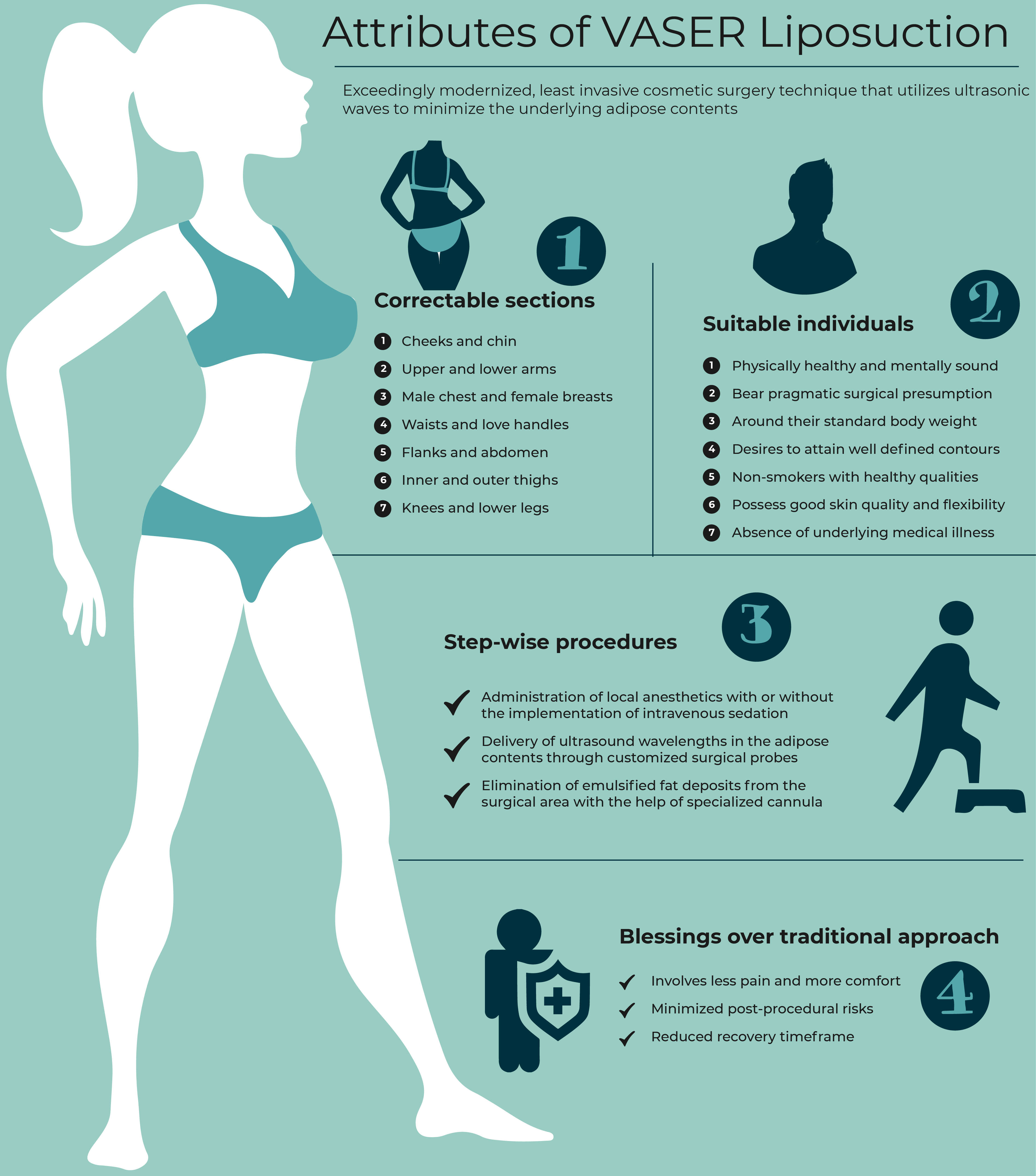
An alternate technology to traditional liposuction is Vaser liposuction, also known as LipoSelection. Vaser ultrasonic liposuction is a procedure of removing fatty deposits from beneath the skin to improve the aesthetics of a particular body part. Liposuction is not a way to lose weight. Patients in good physical condition who are looking for a contouring or body sculpturing are treated by Vaser liposuction.
In Vaser liposuction, tumescent liquid, or a saline solution mixed with anesthetics, is injected into the body area that is being treated. Instead of using a cannula and manual movement to break down the fat tissue, or a laser, or water pressure, vaser liposuction uses ultrasound high frequency vibration to break fat cells apart.
The cosmetic surgeon uses Vaser ultrasonic probes, inserted into the fatty tissue to gently break the fat cells down. The vibration gently disengages and loosens the fat cells and ultimately emulsifies the tumescent fluid that has been infused into the body area. Once the emulsification is in process, a small cannula is used to remove the liquid and the fat cells. Some of the local anesthetic remains in the tissue and that helps to reduce post-procedural pain.
This process is considered gentler than the more traditional liposuction techniques and ultimately offers your cosmetic surgeon a great deal of control and you get the smooth, contoured look for which you are looking.
Additionally, vaser liposuction is specifically designed to loosen fat but to protect and preserve other tissues and by using the saline solution there is typically less bleeding and bruising.
The tumescent technique permits the use of microcannulas which in turn yields smoother cosmetic results. Traditional liposuction cannulas (stainless steel tubes) have a relatively large diameter and remove fat rather quickly. However, with the use of large cannulas (diameter greater than 3 millimeters) there is an increased risk of irregularities and depressions in the skin. Microcannulas with a diameter less than 3 millimeters, allow fat to be removed in a smoother and more uniform fashion. Some surgeons prefer larger cannulas because it allows liposuction to be done more quickly.
Areas on the body that are especially well suited to vaser liposuction include the thighs, knees, abdomen, love handles, arms, chest, chin and neck. The procedure is generally performed either in a hospital or in a doctor’s office and doesn’t require general anesthetic that reduces patient health risk and lowers the overall cost of the procedure. You can have IV sedation or general anesthesia – it just depends on the course of action you choose with your surgeon.
If your doctor uses Vaser assisted liposuction, make sure you discuss the process and the entire procedure so you fully understand what will be happening on the day of your treatment.



